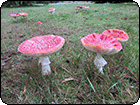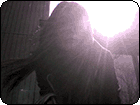 photo by splunge
photo by splunge
 photo by TheophileEscargot
photo by TheophileEscargot
 photo by Kronos_to_Earth
photo by Kronos_to_Earth
 photo by ethylene
photo by ethylene
Comment Feed:
♦ RSS
I love the fact that he'd photograph native people wearing modern dress (for the time) instead of asking them to put on their traditional clothes. To me, that makes him a photojournalist as well as an artist.